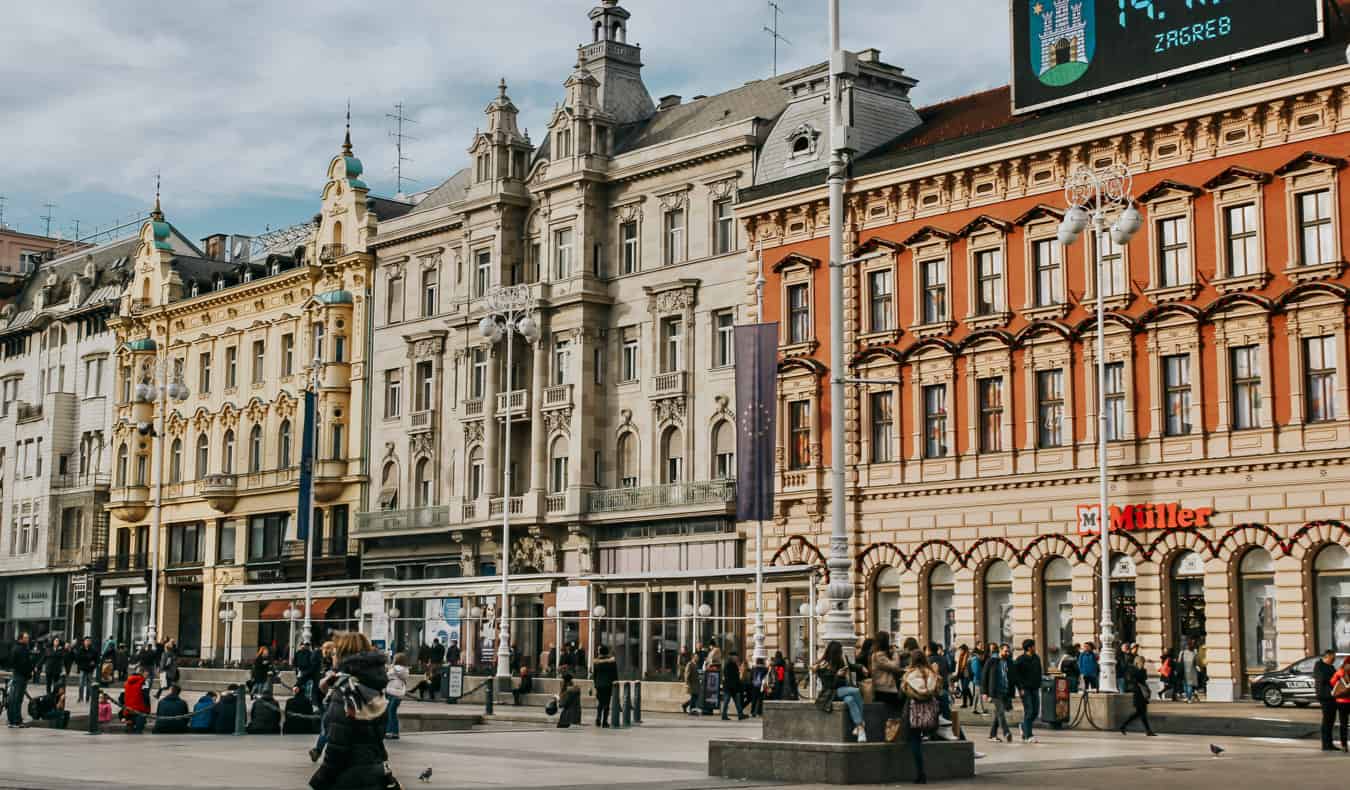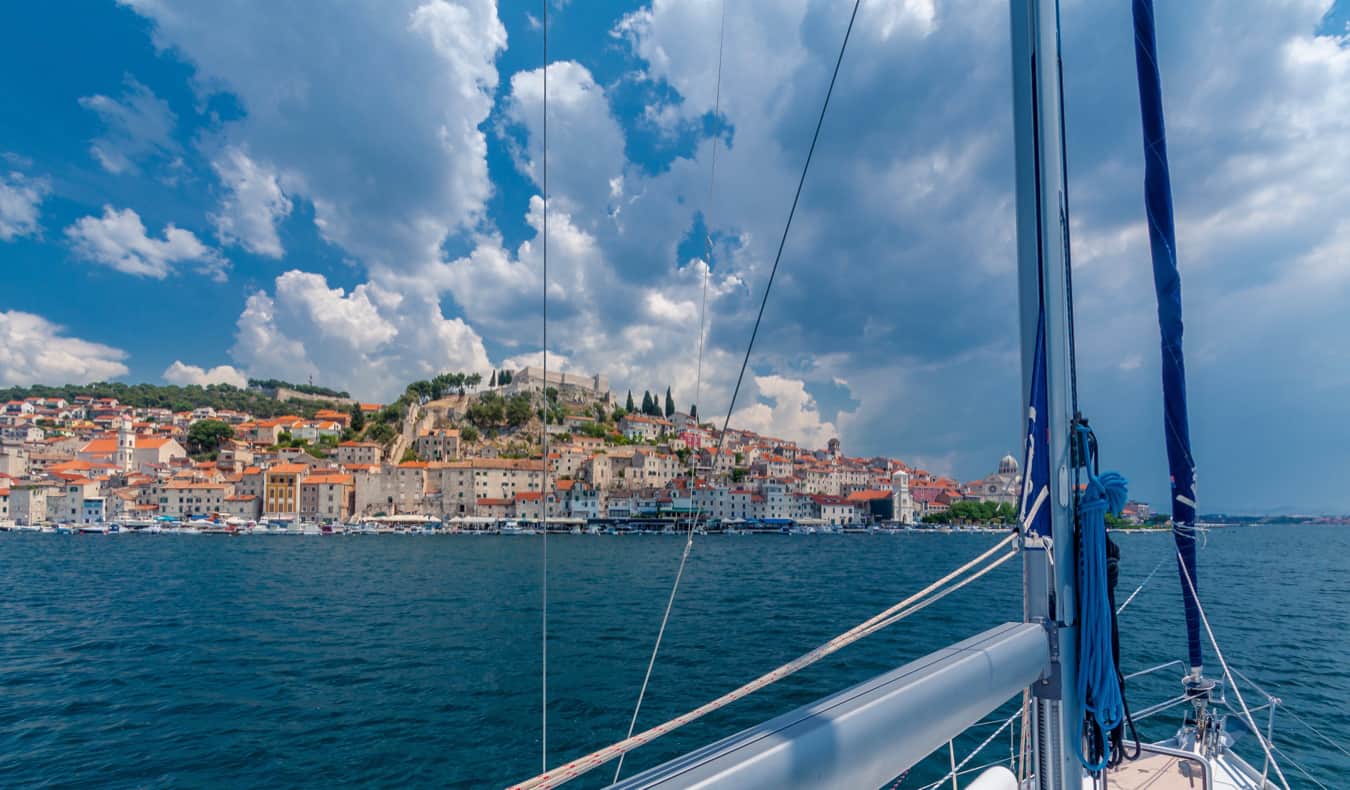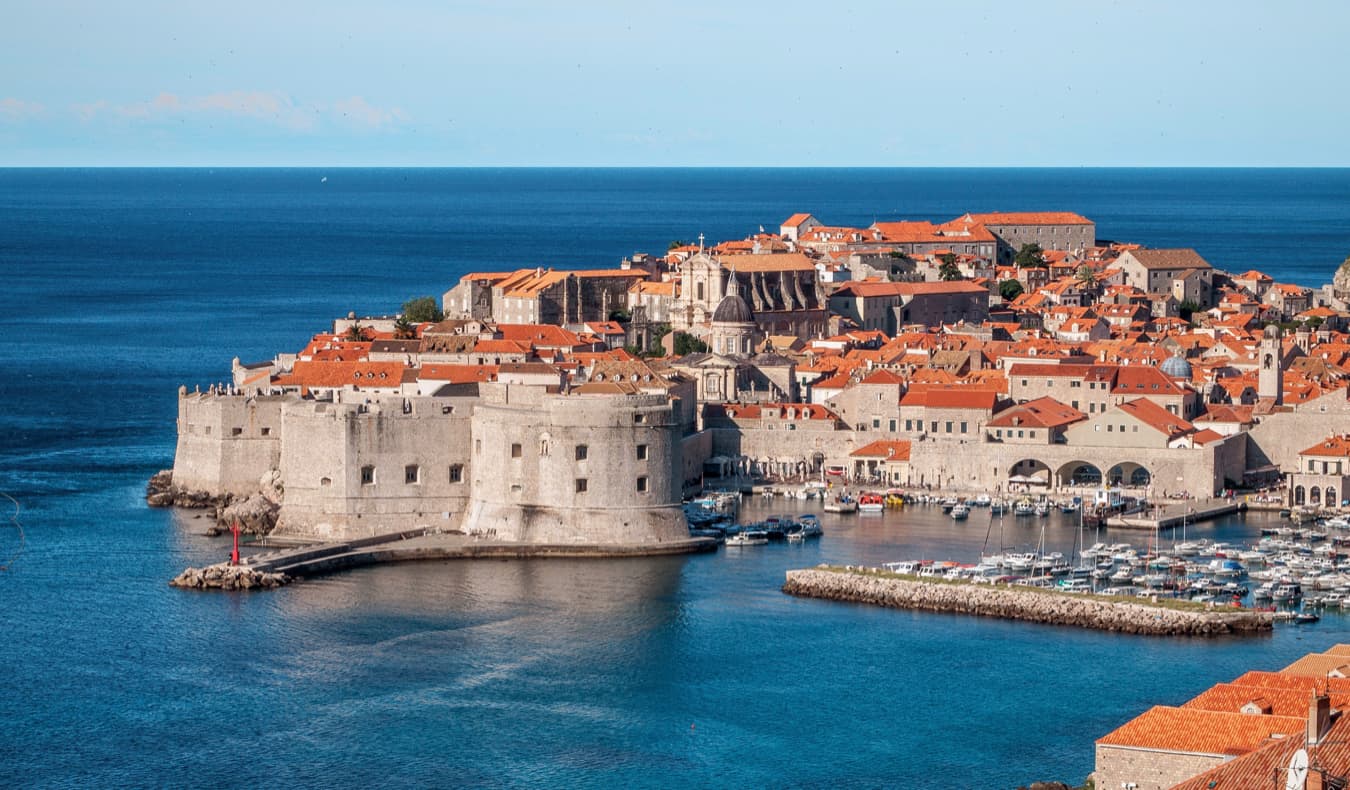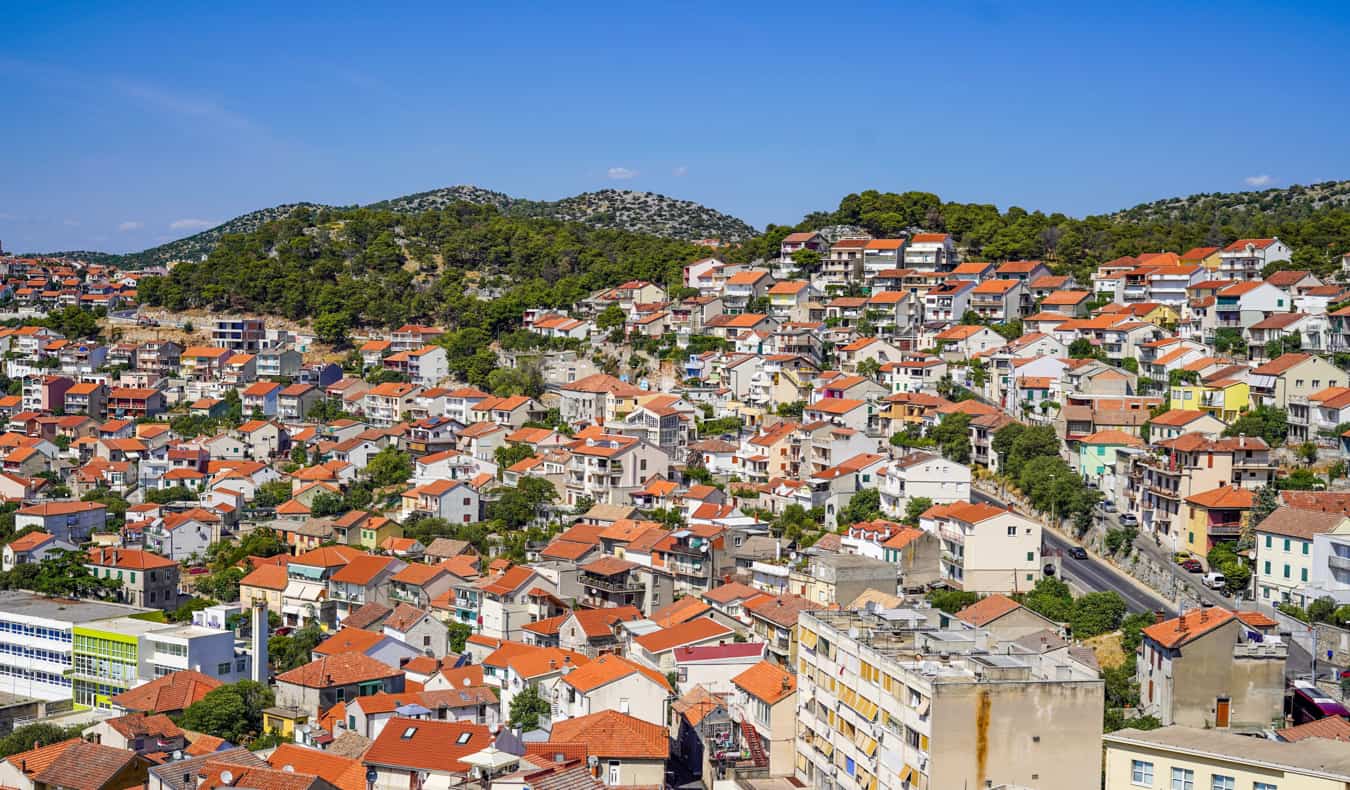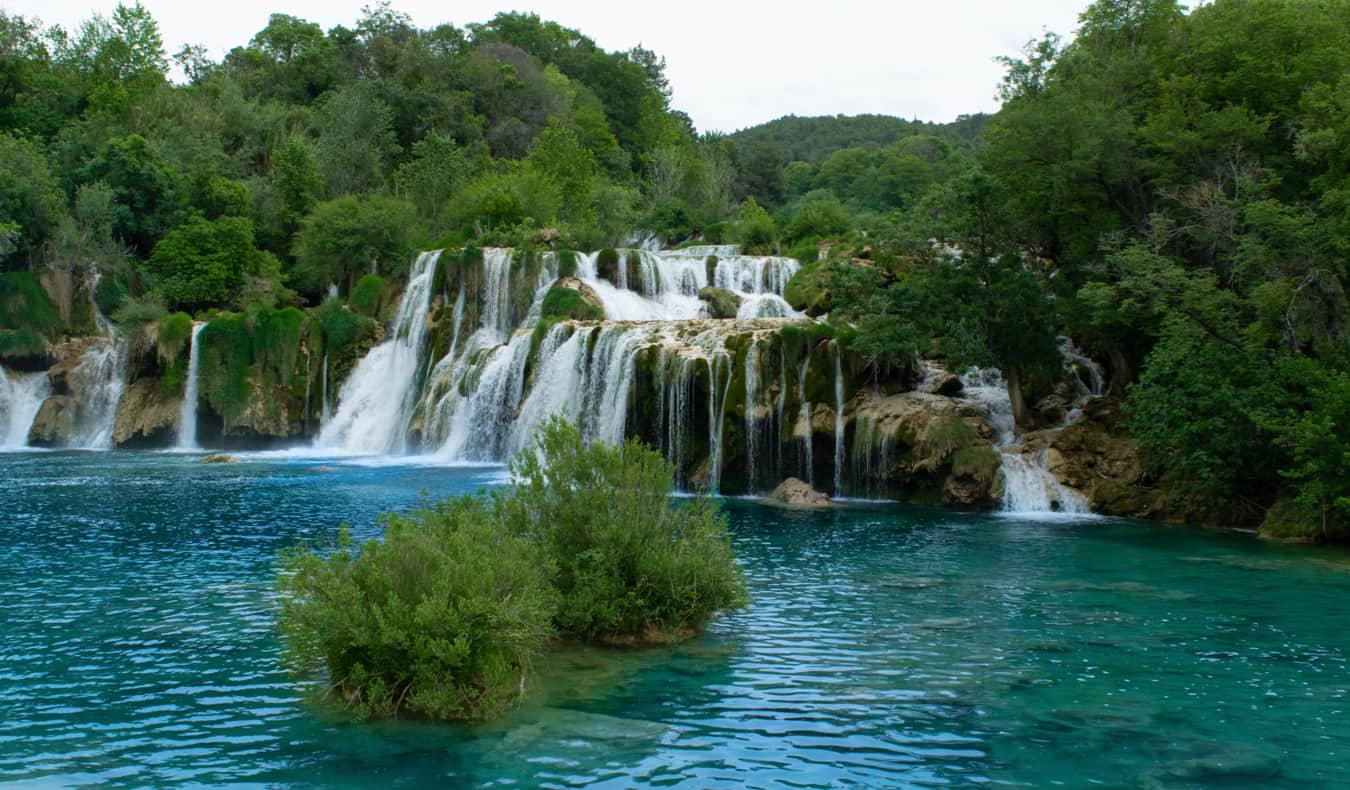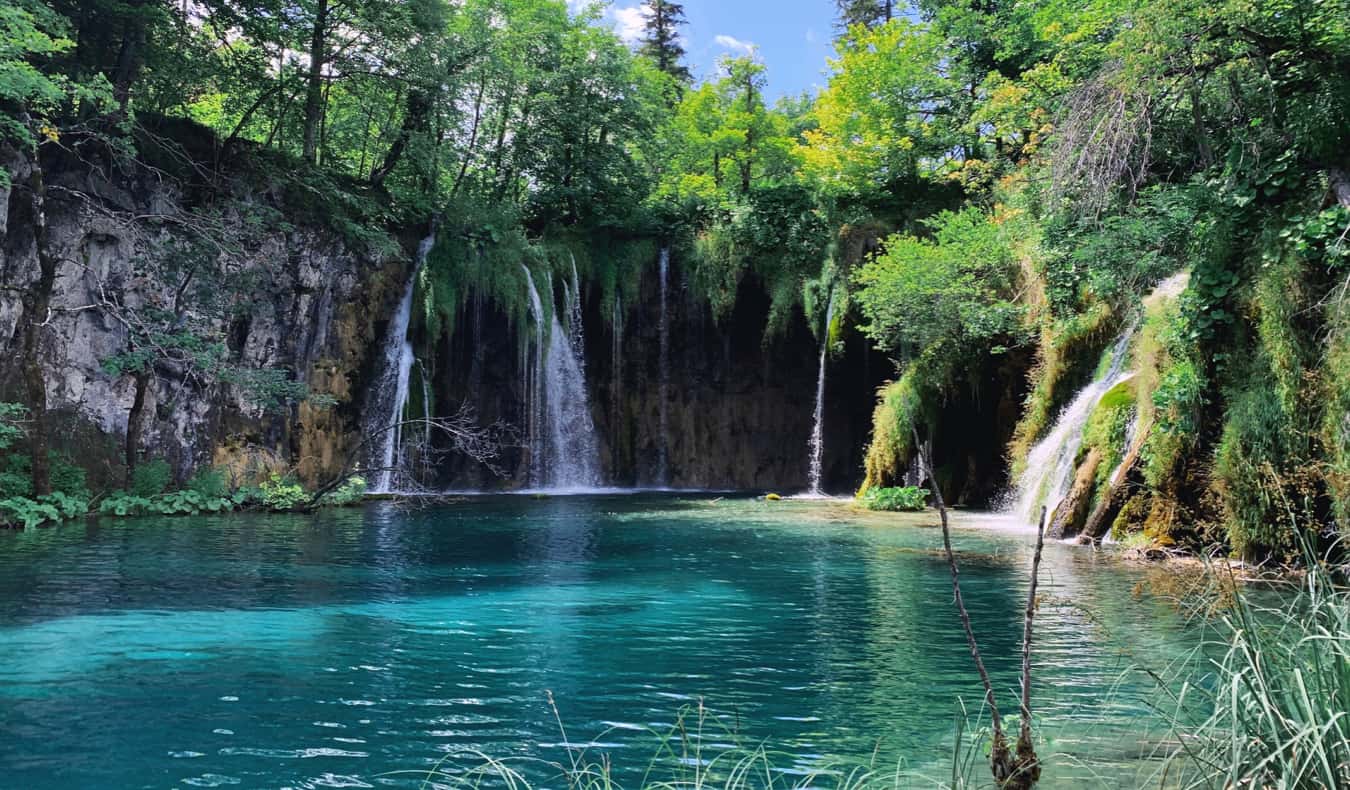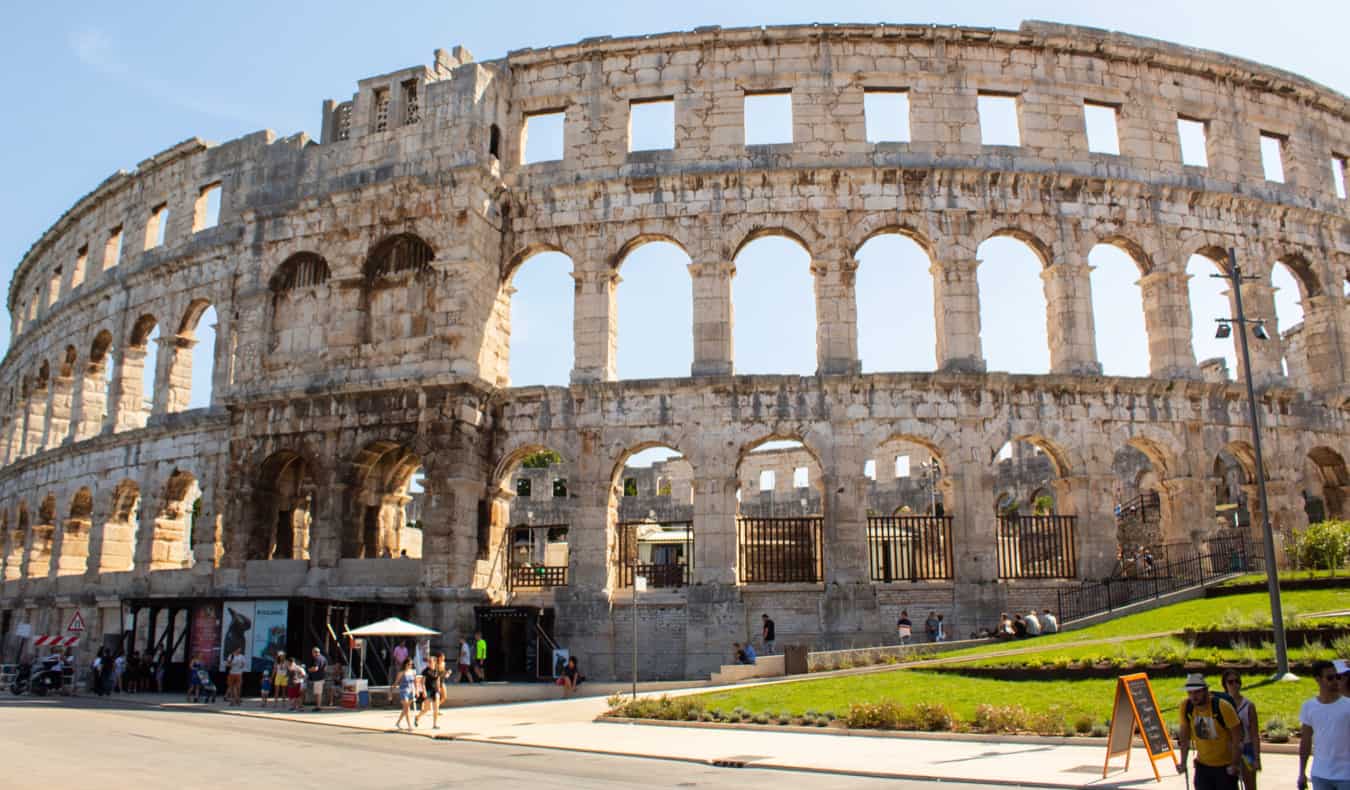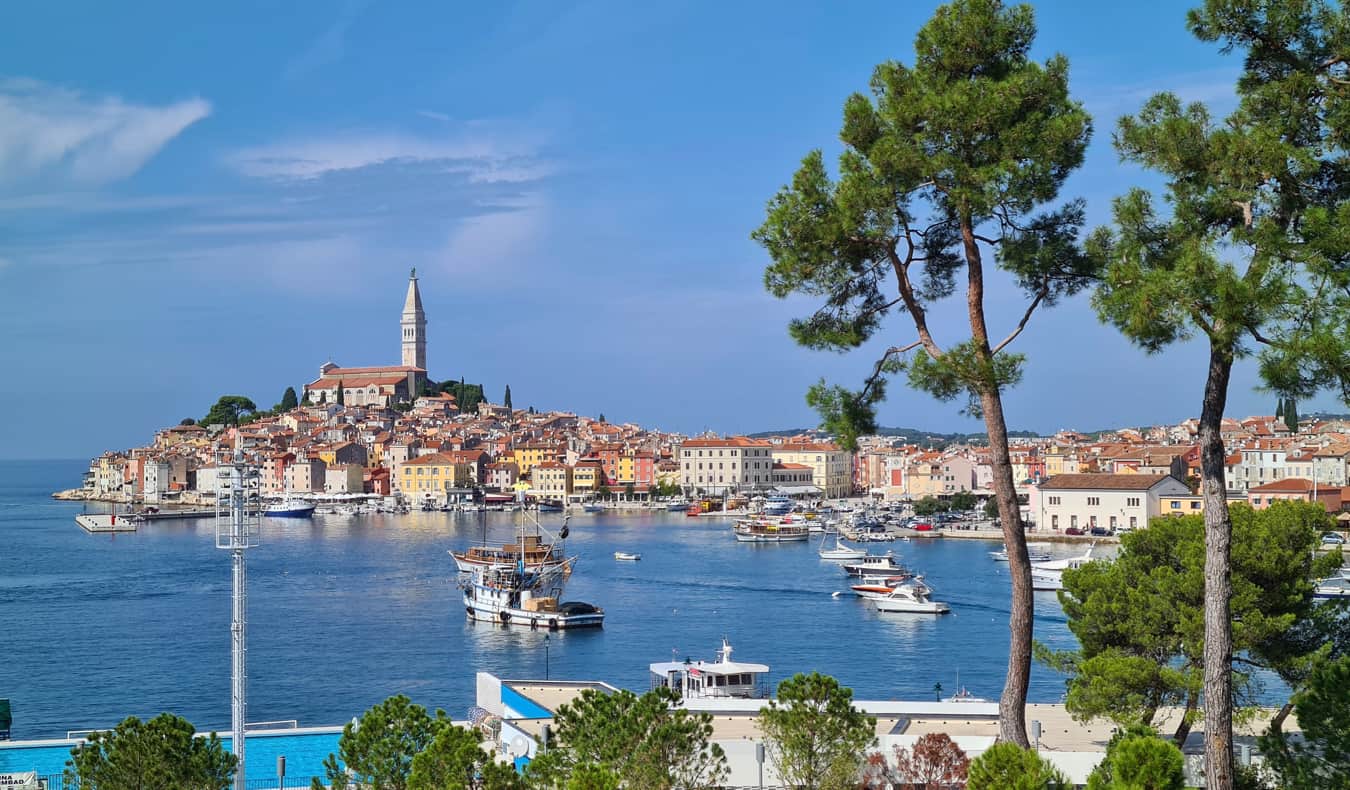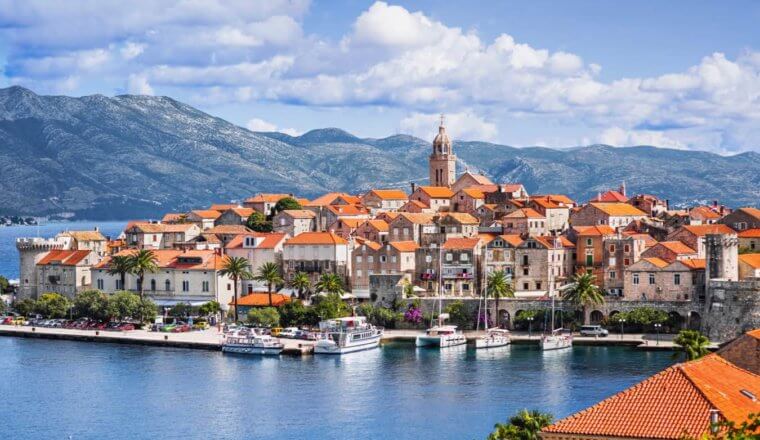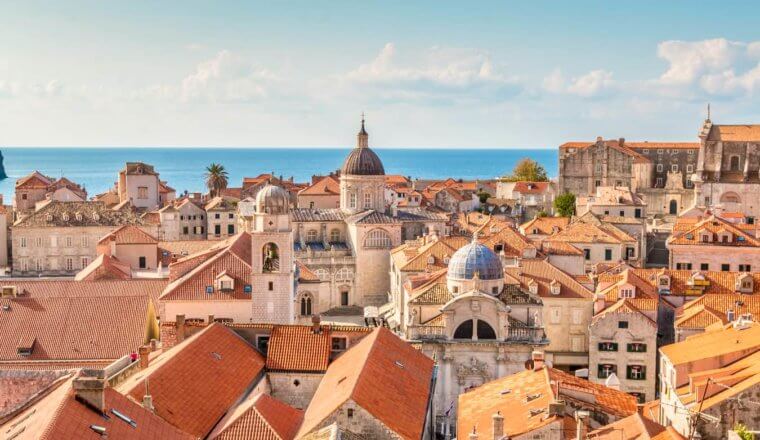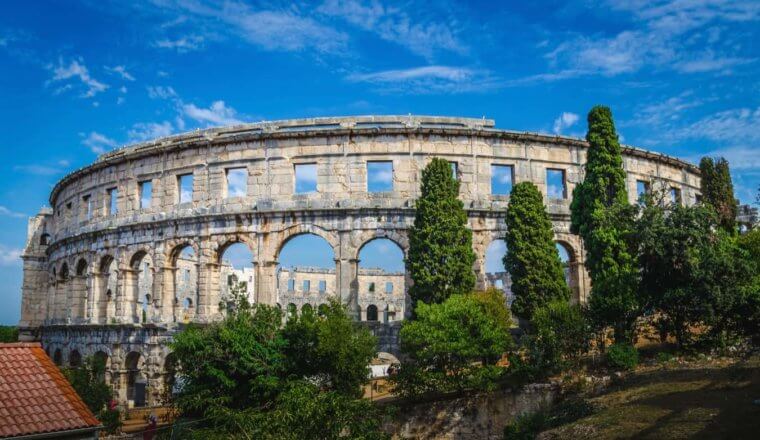
Posted: 1/10/23 | January 10th, 2023
A couple of decades ago, most people associated Croatia with the brutal Balkan Wars that ravaged the region until 1995. But in the last ten years, the country has become a hot spot for tourism, getting a ton of attention from travel magazines and influencers and a surge of visitors (thanks to Game of Thrones).
When I first visited Croatia in 2013, it was already popular. Its gorgeous coastline dotted with compact, medieval seaside towns and innumerable islands made it a hot destination. Split and Dubrovnik were packed with summertime tourists, Yacht Week attracted thousands who wanted to party in the sun with strangers (remember those times?), and foodies were indulging in the country’s excellent cuisine.
That popularity has only accelerated and Croatia remains one of the top destinations in Europe.
This year, I went back and spent most of my time on the Dalmatian coast, as well as exploring tiny towns, Zagreb’s eclectic museums, impressive national parks, and the country’s burgeoning wine scene. While cities like Split and Dubrovnik still get overrun by crowds in the busy summer months, the rest of the country is relatively untouristed (and a lot more affordable).
To help you plan your trip and make the most out of your visit, here are the 17 best things to do in Croatia:
1. Don’t skip Zagreb
Compared to other European capitals, Zagreb is underrated and underappreciated. Its charming Old Town is lined with narrow cobblestone streets flanked by Gothic churches and Baroque palaces. It’s full of quirky museums and lots of green space. With its pedestrian-only streets and plentiful trams, I often felt I was in Amsterdam. A lot of travelers skip it, but I wouldn’t suggest that. Spend at least three days there.
Don’t miss the Museum of Broken Relationships, the Hangover Museum, and the Botanical Gardens. Make sure to take the free walking tour and Secret Zagreb’s spooky history tour. Also, be sure to visit the Dolac Market for cheap eats, and enjoy all the wine you can drink. For a day trip, head to Jarun Lake (just 8 kilometers/5 miles from the city center) to swim or kayak when the weather gets warm.
2. Get off the beaten path in Slavonia
Not a lot of tourists make it to the region of Slavonia (not to be confused with neighboring Slovenia or nearby Slovakia). The region is very rural and famous for all its food and wine production. Its main town, Osijek, has a relatively large historical center filled with Gothic buildings and chunky cobblestone streets. Head to the wine-country town of Zmajevac (“zma-ye-vatz”), just a few miles from the border with Hungary and Serbia. Try anything made with the local Graševina grape. And be sure to try fish paprikash, a paprika-laden fish stew slow-cooked over an open flame for hours.
3. Take a sailing tour around the islands
With over a thousand islands along the coast, it would be silly to travel to Croatia and not go island-hopping. One of the best hubs for this is Split. From there you can jump on a boat and go anywhere on the central Dalmatian coast. The most popular islands are Brac, Hvar, Krk, Cres, and Lošinj, but don’t be afraid to go further afield and explore some of the lesser-known ones, such as Silba, Vis, and Lastovo. Most have ferries that cost less than 5 EUR each way.
You could also charter a boat or do a hop-on, hop-off boat tour. Charters can get pricey though, as a seven-day trip starts at 1,800-2,500 EUR. During the high season, prices rise dramatically, but if you go during the shoulder season, you can find some great deals.
4. Indulge in oysters in Mali Ston
An hour’s drive up the coast from Dubrovnik is the untrammeled village of Ston and its sibling Mali Ston. Founded in the 14th century, the region was originally home to a defensive fortification. Today, they’re famous for the oysters that are farmed in Mali Ston Bay. You can visit nearby farms to learn more about the oyster industry and try samples. Bota Šare, a restaurant in Dubrovnik, has an outpost here that can organize tours.
5. Party in Hvar
The island of Hvar, particularly its eponymous main town, is an international hot spot for scenesters looking to dance and drink the night away. But if that’s not your thing, there are other, more tranquil places on the island too. Check out Stari Grad (literally “Old Town”) on the opposite side of the island from Hvar Town. Additionally, there are many gorgeous beaches (like Pokonji Dol, Mekicevica, and Milna), hiking opportunities, and picturesque vineyards to explore. Plus, there are multiple boat-tour and day-trip options to choose from too.
6. Go wine tasting on the Peljesac Peninsula
This swath of land (pronounced “pel-yeh-shatz”) is often overlooked as tourists drive the length of the peninsula to reach the short ferry ride to the island of Korcula. But it’s worth spending some time here, as the region produces some lovely wine. One of the best wineries is Križ, which also happens to be one of the few organic ones here.
7. Visit Dubrovnik
Dubrovnik is a stunning city best known for its historic walled Old Town district (which was a major Game of Thrones filming location). It’s absolutely beautiful. Wander around its limestone streets, admire the Baroque buildings, and take in the views of the Adriatic Sea. Be sure to take a free walking tour, go atop the city’s walls, and enjoy the swimming spots while you’re here too. Also, don’t miss the 17th-century cathedral and the 15th-century clock tower. To get away from the city, take a day trip to Lokrum, an island off the coast where you can swim and hike.
Since Dubrovnik is one of the most popular (if not the most popular) cities in the country, expect crowds and high prices! Steer clear of the restaurant-lined Ulica Prijeko, which locals have nicknamed “Banditen Strasse” (Bandit Street) because it’s where tourists go to get ripped off and eat bad food.
8. Spend a night in Karlovac
This leafy town of 55,000 is an off-the-radar spot about an hour’s drive from Zagreb. It was built by the Austrians in the 16th century, though there’s not much here now. The “castle” is really just a small fort that’s been rebuilt; there are also a couple of small museums, and some walking and bike paths. But its brewery, Karlovacko, makes one of the most popular and ubiquitous beers in Croatia. If you don’t have a car, I’d spent just one night. If you have a car, you could spend two nights here and drive out to some of the nearby waterfalls and hiking trails.
9. Spend a couple of days in underrated Sibenik
Located north of Split and south of Zadar, this hilly, seaside medieval town is often passed by. Plant yourself here for a day or two to gawk at the majestic Renaissance-era Cathedral of St. James, built entirely of stone (it was completed in 1536, 105 years after construction began). Šibenik also makes for a nice base for exploring Krka National Park.
10. Meander in Diocletian’s Palace
Split has one of the great wonders of Europe: Diocletian’s Palace. This UNESCO Heritage Site was home to the fourth-century Roman emperor who reigned from 284 to 305 CE. He was the first Roman emperor to abdicate, retiring to his palace to garden. Having eventually become the hub around which Split was built, the palace has since crumbled and deteriorated here and there, but other things have moved in, as the former hallways and rooms are now flanked by shops and cafés.
11. Hike around Krka National Park
Located inland (and just a 20-minute drive) from Šibenik, Krka National Park is filled with dramatic waterfalls and a verdant landscape. The star of the show here is Slapovi Krke, a series of stunning waterfalls you’ve no doubt seen on Instagram. The park itself runs along the Krka River for about 80 kilometers (50 miles) from the coast, and hiking trails are abundant. In addition to the natural beauty of the place, be sure to check out the 14th-century Visovac Monastery, plopped in the middle of an island on the Krka River. Admission is 40 EUR in the summer (and just 6.64 EUR in the winter). Get there early to beat the tourist hordes that bus in during the summer.
12. Visit Plitvice Lakes
There are seven national parks in Croatia, but if you only visit one, make it Plitvice (pronounced “pleet-vee-tzeh”). It has been written about extensively but it lives up to all the hype. I was blown away by it. Spanning almost 300 square kilometers (115 square miles), the park includes a series of emerald lakes (due to the limestone in the area) and beautiful waterfalls.
The lakes are located 2.5 hours south of Zagreb. If you go, hike Route K as it runs the entire park and only takes about four hours (they say six but it’s really a lot easier than they let on). Admission is 40 EUR in the summer (10.80 EUR in the winter). If you visit in the summer, get here early to beat the crowds because they are really, really intense.
13. Road-trip around Istria
The peninsula of Istria is endowed with high-quality wines, creamy goat cheese, rich olive oil, and sumptuous white truffles. It’s a food paradise that sees a fraction of the tourists that make it to places like Split or Dubrovnik. This area is best explored by car, as the buses can be slow and infrequent and don’t go to all of the smaller, out-of-the-way towns.
Pula and Rovinj (see below) are two of the main attractions here. However, there are lots of others, such as the charming hill towns of Motovun and Grožnjan; the latter is home to a handful of artists who moved here from places like Zagreb. Moreover, don’t miss Rabac and its postcard-perfect beaches and the Euphrasian Basilica (a UNESCO site) in Porec, which dates to the sixth century.
14. Explore Pula
Istria’s largest town (population: 55,000) has a lot to offer. There’s a Roman amphitheater (the sixth-largest in the world; Rome’s Coliseum is the largest); the 2,000-year-old Temple of Augustus, dedicated to the Roman emperor; the Arch of the Sergii, a triumphal Roman structure celebrating family of that name (also over two millennia old); and the Monastery of Saint Francis, a late Romanesque church that dates to the 14th century.
Moreover, be sure to visit the fort, the history museum, and the Museum of Olive Oil, which provides an excellent exhibit on olive oil production (and includes a tasting).
15. Admire Rovinj
The best-preserved city in Istria is Rovinj. It’s the most popular city on the peninsula, thanks to its picturesque and labyrinthine Old Town, plentiful beaches, and numerous ruins nearby. Visit the Rovinj Heritage Museum to learn about the region’s past, and spend some time wandering around the busy port to take in the local pace of life.
There are also a dozen exquisite beaches (such as Monte, Lone Bay, and Amarin) that are perfect for swimming and lounging. You can also take a number of boat trips to nearby islands and Lim Bay (which is famous for producing oysters).
16. Try truffle hunting
Many people associate truffles with Alba, Italy, and Périgord, France. But more and more are discovering that Istria is a major producer too. Prodan Tartufi, a family-run truffle-hunting business near the medieval hill town of Buzet, is pretty famous, though expensive. Tarandek Truffle Hunting runs affordable, small-group truffle experiences for 50 EUR per person.
17. Hike your heart out
From coastal walks to mountain climbing to hiking the inland canyons, hills, and forests, Croatia has a lot to offer anyone looking to get out and stretch their legs. The most popular coastal hiking is found in Mljet National Park, on the island of Mljet. Inland, the most popular hiking spot is Medvednica Mountain near Zagreb or in Risnjak National Park. Other spots worth visiting are Brijuni National Park (home to 14 different islands), Krka National Park (with beautiful waterfalls; see above), and Paklenica (featuring some rugged canyon trails).
Croatia is awesome. From the Central European vibe of Slavonia and the sunny, limestone-clad streets of Dubrovnik to the Italian-inflected vibes of Istria and the bustling capital Zagreb, there’s so much to see and do in the country. Your best bet to get the most out of your visit is to pick a region and take a deep dive into that one area. You have plenty of options!
Get Your In-Depth Budget Guide to Europe!
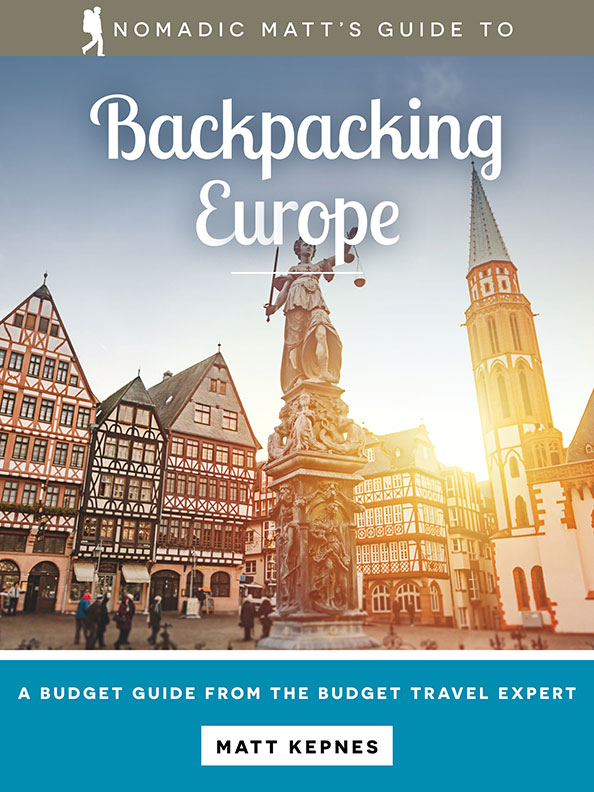
My detailed 200+ page guidebook is made for budget travelers like you! It cuts out the fluff found in other guides and gets straight to the practical information you need to travel while in Europe. It has suggested itineraries, budgets, ways to save money, on and off the beaten path things to see and do, non-touristy restaurants, markets, bars, safety tips, and much more! Click here to learn more and get your copy today.
Book Your Trip to Croatia: Logistical Tips and Tricks
Book Your Flight
Use Skyscanner to find a cheap flight. They are my favorite search engine because they search websites and airlines around the globe so you always know no stone is left unturned!
Book Your Accommodation
You can book your hostel with Hostelworld as they have the biggest inventory and best deals. If you want to stay somewhere other than a hostel, use Booking.com as they consistently return the cheapest rates for guesthouses and cheap hotels.
Don’t Forget Travel Insurance
Travel insurance will protect you against illness, injury, theft, and cancellations. It’s comprehensive protection in case anything goes wrong. I never go on a trip without it as I’ve had to use it many times in the past. My favorite companies that offer the best service and value are:
- SafetyWing (best for everyone)
- Insure My Trip (for those over 70)
- Medjet (for additional evacuation coverage)
Looking for the Best Companies to Save Money With?
Check out my resource page for the best companies to use when you travel. I list all the ones I use to save money when I’m on the road. They will save you money when you travel too.
Want More Information on Croatia?
Be sure to visit our robust destination guide on Croatia for even more planning tips!
